Jimmy Weber
DelGrad: Exact gradients in spiking networks for learning transmission delays and weights
Apr 30, 2024
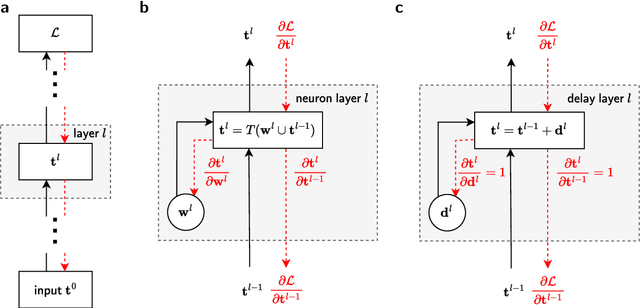
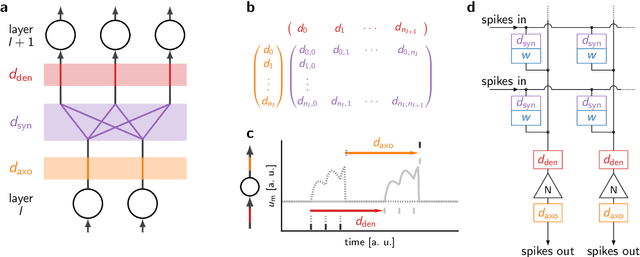
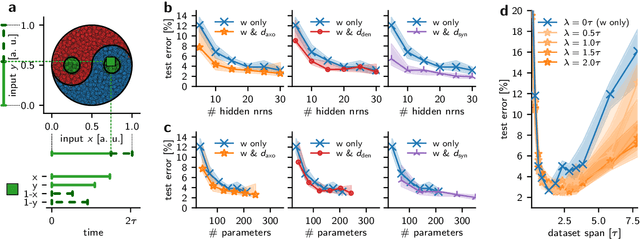
Abstract:Spiking neural networks (SNNs) inherently rely on the timing of signals for representing and processing information. Transmission delays play an important role in shaping these temporal characteristics. Recent work has demonstrated the substantial advantages of learning these delays along with synaptic weights, both in terms of accuracy and memory efficiency. However, these approaches suffer from drawbacks in terms of precision and efficiency, as they operate in discrete time and with approximate gradients, while also requiring membrane potential recordings for calculating parameter updates. To alleviate these issues, we propose an analytical approach for calculating exact loss gradients with respect to both synaptic weights and delays in an event-based fashion. The inclusion of delays emerges naturally within our proposed formalism, enriching the model's search space with a temporal dimension. Our algorithm is purely based on the timing of individual spikes and does not require access to other variables such as membrane potentials. We explicitly compare the impact on accuracy and parameter efficiency of different types of delays - axonal, dendritic and synaptic. Furthermore, while previous work on learnable delays in SNNs has been mostly confined to software simulations, we demonstrate the functionality and benefits of our approach on the BrainScaleS-2 neuromorphic platform.
Neuromorphic spintronics accelerated by an unconventional data-driven Thiele equation approach
Jan 26, 2023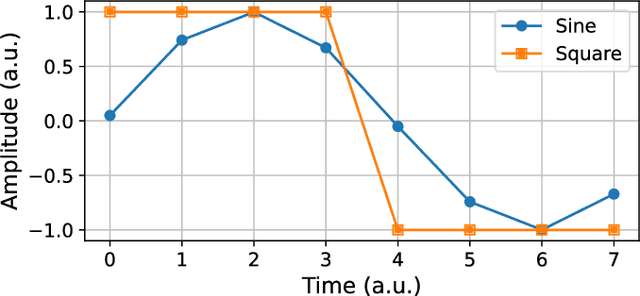
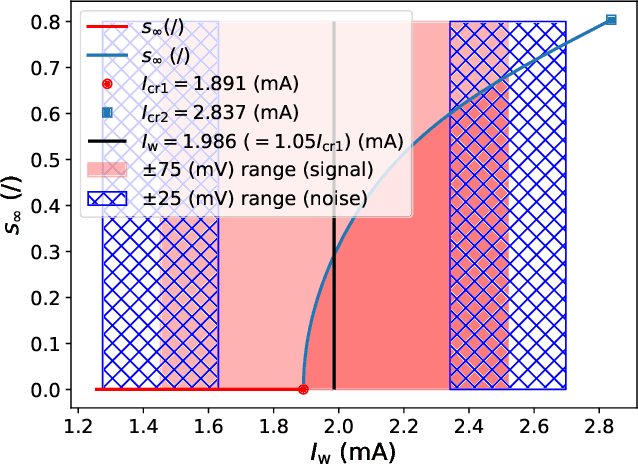
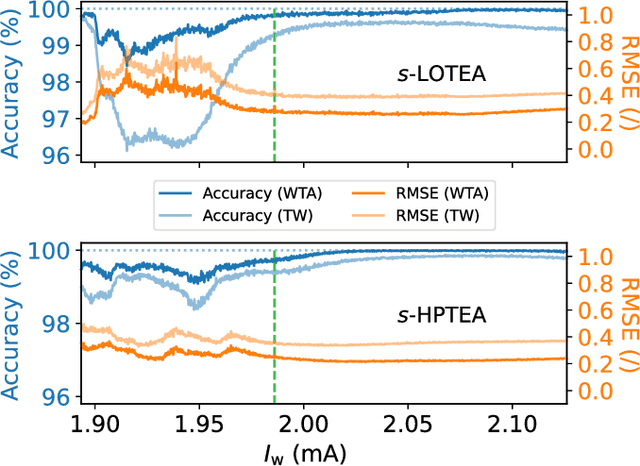
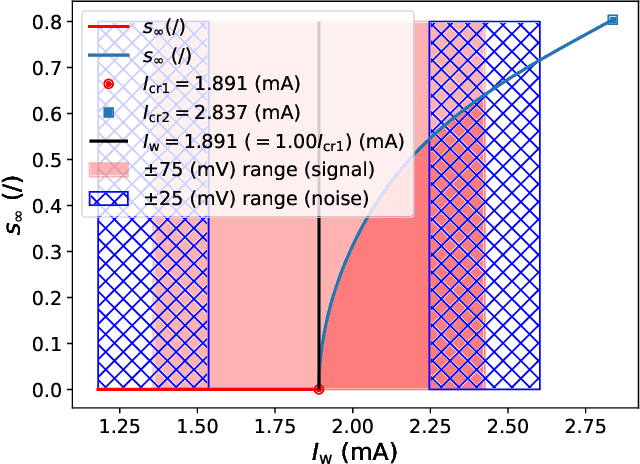
Abstract:A hardware neural network based on a single spin-torque vortex nano-oscillator is designed using time-multiplexing. The behavior of the spin-torque vortex nano-oscillator is simulated with an improved ultra-fast and quantitative model based on the Thiele equation approach. Different mathematical and numerical adaptations are brought to the model in order to increase the accuracy and the speed of the simulations. A benchmark task of waveform classification is designed to assess the performance of the neural network in the framework of reservoir computing and compare two different versions of the model. The obtained results allow to conclude on the ability of the system to effectively classify sine and square signals with high accuracy and low root-mean-square error, reflecting high confidence cognition. Given the high throughput of the simulations, two innovative parametric studies on the dc bias current intensity and the level of noise in the system are performed to demonstrate the value of our models. The efficiency of our system is also tested during speech recognition and shows the agreement between these models and the corresponding experimental measurements.
 Add to Chrome
Add to Chrome Add to Firefox
Add to Firefox Add to Edge
Add to Edge